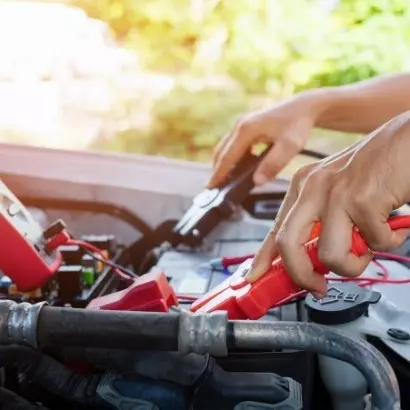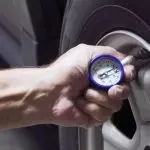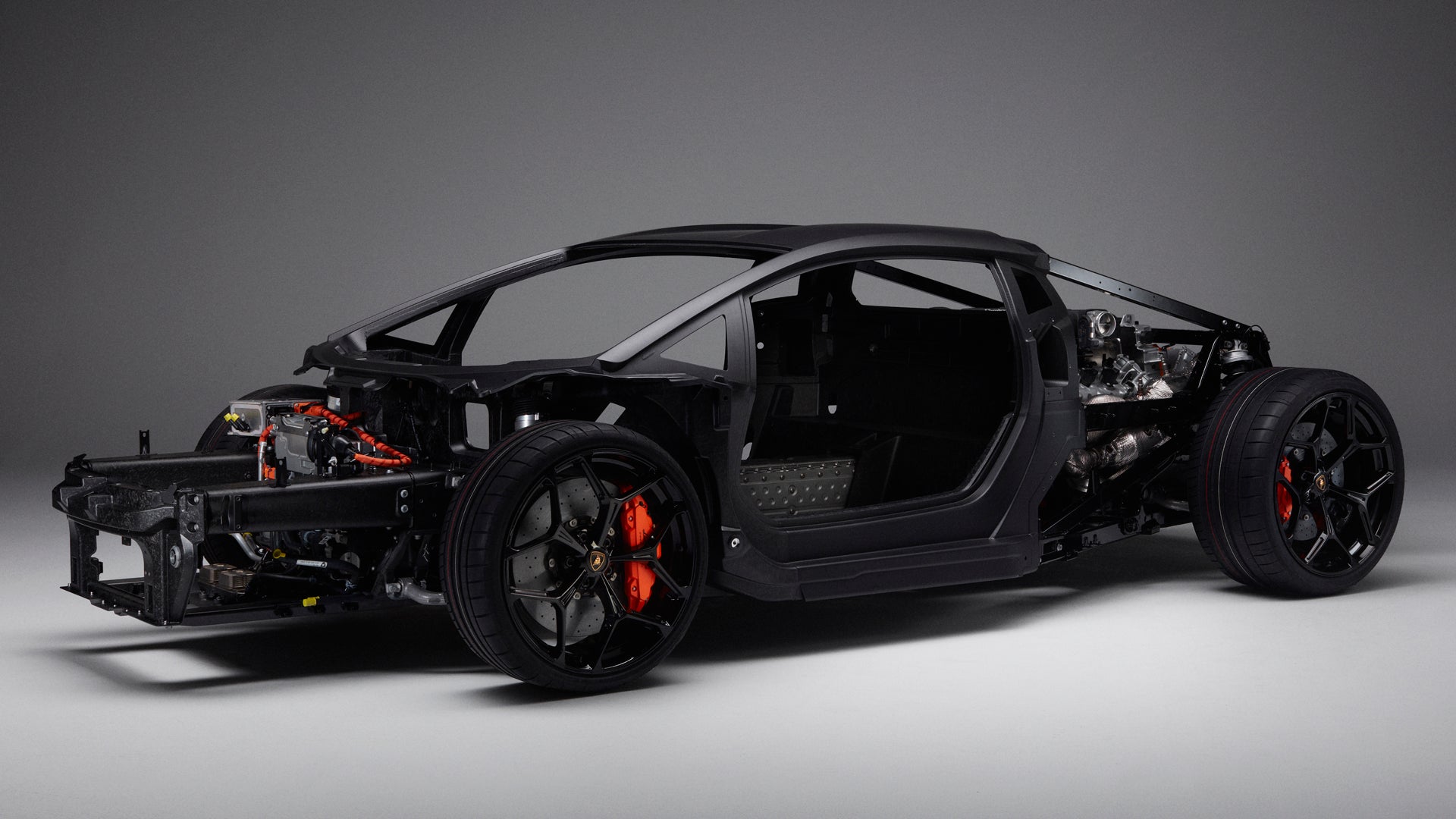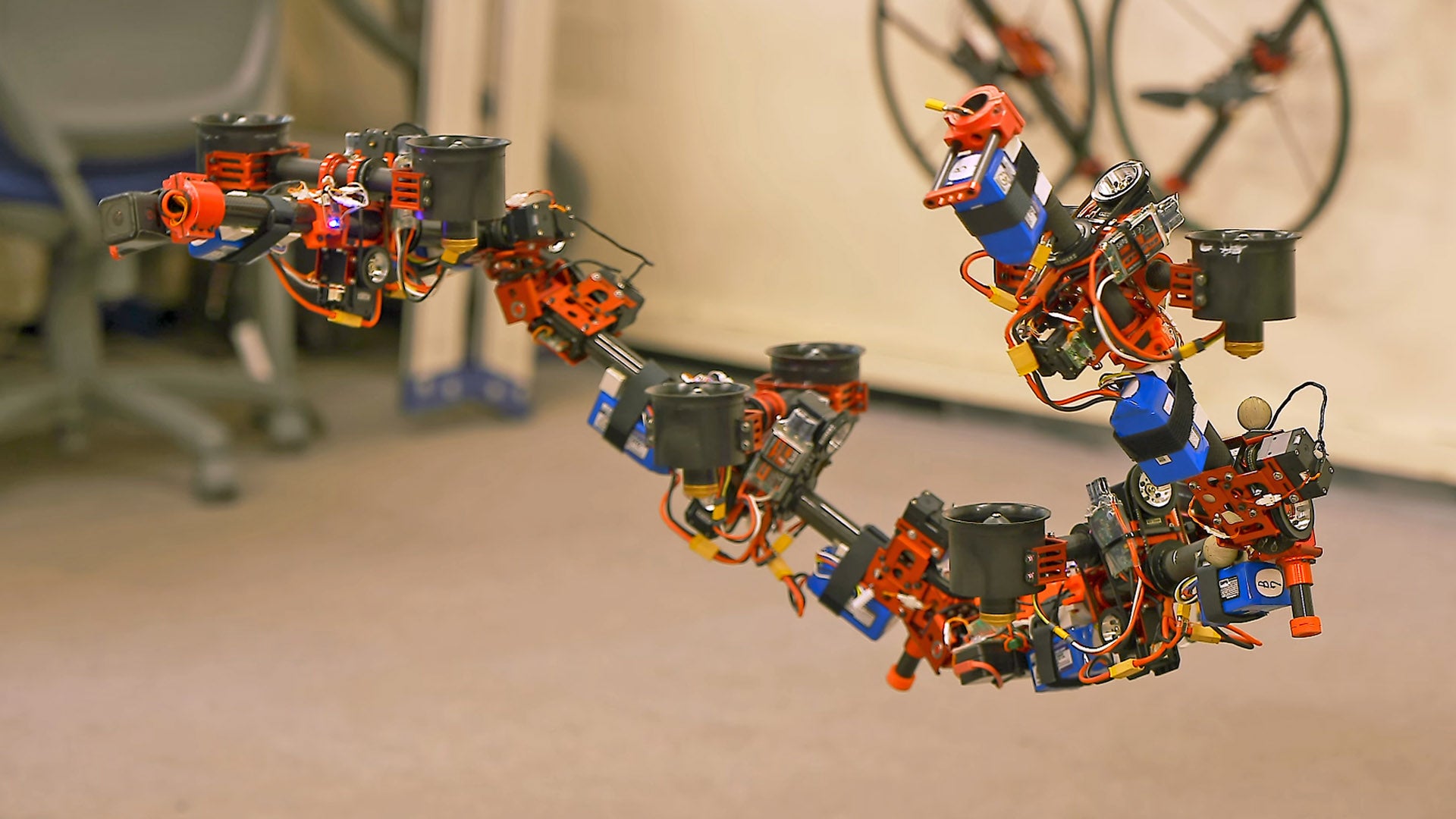Starting a car is one of the basic things most motorists know. But, not all of them are familiar with the amps required to start it. Different vehicles have varying engines; therefore, the amperes used to start a pickup might not be the same as needed to start a saloon car.
So, have you ever asked yourself how many amps to start a car? At one point, you might need to start a vehicle, and knowing amperes requirements is essential. You should pay attention when buying a jump starter.
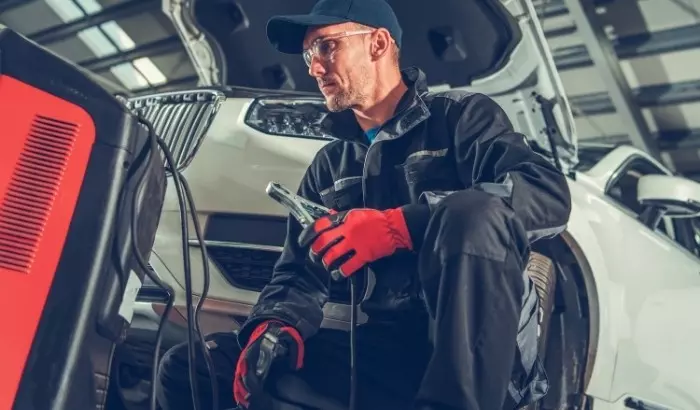
If you want to be time-saving, please check the comparison table to go to our top recommendations about the best jump starters:
Image | Features | Further information |
|---|---|---|
|
NOCO Boost Plus (GB40) | - Brand: NOCO - Item Dimensions: 6.57 x 3.15 x 7.72 inches - Item Weight: 2.4 pounds - Amperage: 1000 Amps up to 20 jump starts on a single charge, - Voltage: 12 Volts - Battery Cell Composition: Lithium - Vehicle Service Type: Passenger Car - Special Features: 100 Lumen LED Flashlight, Portable Power Bank for USB Devices, 1000A 12V Portable Lithium Car Battery Jump Starter, Reverse Polarity and Spark-Proof Protection | |
|
NEXPOW (1500A) Battery Jump Starter | - Brand: NEXPOW - Item Dimensions LxWxH: 9 x 3.4 x 1.2 inches - Item Weight: 3.16 pounds - Battery Cell Composition: Lithium Ion - Vehicle Service Type: Passenger Car, Motorcycle, ATV, UTV, Truck, Snowmobile - Peak Output Current: 1500 Amps - Super Capacity Power Bank: 21800mAh capacity and Two USB Output Ports (one is 5V/9V/12V USB Quick Charge) | |
|
DBPower (800A) Portable Car Jump Starter | - Brand: DBPOWER - Item Dimensions LxWxH: 7.28 x 1.57 x 3.54 inches - Item Weight: 1.33 pounds - Vehicle Service Type: Car, Truck, UTV, Motorcycle, Truck, Snowmobile, Personal Watercraft, Track, Trailer, Cellphone, Laptop, TabletCar, Truck, UTV, Motorcycle, Truck, Snowmobile, Personal Watercraft, Track, Trailer, Cellphone, Laptop, Tablet - Powerful Jump Starter: 12V vehicles (up to 7.2L petrol or 5.5L diesel engine) in seconds with 800A peak current and 18000mAh battery capacity | |
|
Tacklife (T8 Pro 1200A) Car Jump starter | - Brand: TACKLIFE - Package Dimensions: 8.86 x 7.05 x 3.94 inches - Item Weight: 3.34 pounds - Vehicle Service Type: Passenger Car, Motorcycle, Van, SUV, Truck, Watercraft - Amperage: 1200 Amps - Voltage: 12 Volts - Start up to 30 times on a single charge (Only 4.5 hours of charging) - Suitable for 12V cars, SUVs, trucks, or vans (Up to 7.5L Gas, 6L Diesel Engine) | |
|
Clore Automotive (JNC660) Jump-N-Carry Jump Starter | - Brand: Clore Automotive - Item Dimensions: 16.3 x 14.1 x 5.1 inches - Item Weight: 18 pounds - Battery Cell Composition: Lead-Acid, AGM - Voltage: 12 Volts - Vehicle Service Type: Passenger Car - Amperage: 1700 Amps - Cranking Amps: 425 - 22Ah Clore PROFORMER Battery - 46" Heavy-Duty #2 AWG Cables - DC outlet to power 12 volt accessories; DC input to recharge internal battery - Built-in Automatic Charger |
How Many Amps to Start a Car
Whenever a car battery dies, then kick-starting it is the best option for most motorists. This practice has become prevalent due to the introduction of jump starters in the automobile industry. First, buy a jump starter and then charge it to start your car because it lasts for a long.
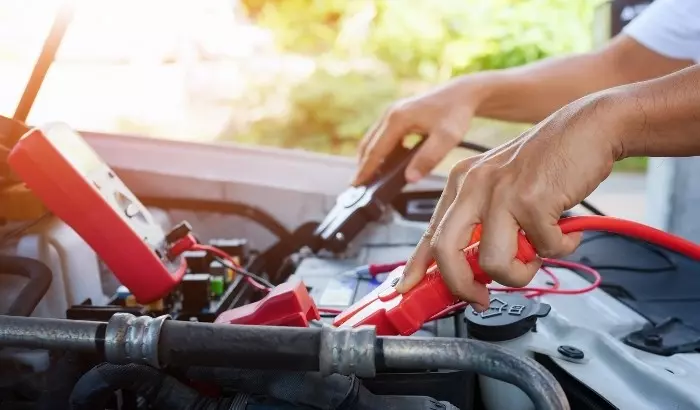
Most small-sized cars, light trucks, and SUVs require more than 400 amps. Big vehicles such as trucks require more amperes, most likely 1000 amps. The amperes needed to start an engine are often lower than cool cranking amps (CCA) of the car battery.
Another aspect to remember is that a high-amp jumper can jumpstart a vehicle that needs a lower amount of amperes. For instance, a 1000-amp jumper can work for a vehicle that requires about 500amps to start. But it is not sufficient if the vehicle needs 1400 amps.
If your car requires about 800 amps to start, then a 400-amp unit is not enough to boost it. This might be because of the dead battery for various reasons. For instance, your car light or radio might have been turned on the whole night, hence draining out the engine battery.
Therefore, in this situation, a 400-amp unit can charge the battery and restart the engine easily. Connect the amp power unit to a battery and allow it to charge. Use a 400-amp power pack to boost your vehicle several times effortlessly.
Calculating the Battery Voltage
Now that you know how many amps start a car, the approximation is quite different for battery voltage. Don’t plug in a 6 voltage into a 12V source because it can blow up. Your starter’s motor power is calculated on watts, which you can get by multiplying amps by volts.
A battery with 12V needs about 250 amps to start. But the amp figure increases when the voltage drops. Therefore, remember you can use a powerful amp-power pack to kick-start a vehicle but not a powerful volt pack.
How Many Amps Does a Car Use While Running?
Now that you know how many amps needed to start a car, why stop there. You must be thinking about the number of amps it uses while running. The reason is that when you start your vehicle, the engine draws power from the battery, and automatically the alternator is turned on.
Even if vehicles belong to the same model, they differ while running. Consequently, a different number of devices you are charging also contribute to your car’s number of amps. For instance, if your AC is turned on or listening to music, or using your car indicator.
Factors to Consider When Starting a Car
Several factors contribute to the amp needed to start a vehicle, such as voltage, state of the wires, and jump starter. Other factors that determine the amount of amps include;
- Size of the engine: A small engine might require about 50 amps to boost the battery, while a bigger engine requires a considerable amount of amps.
- Type of oil used: The car oil’s viscosity plays a significant role in determining the car amps. For instance, an engine using 40W oil is more difficult to start than that using 5W.
- Temperature: Ambient temperature affects battery amps indirectly. During the cool temperatures, the oil becomes thick hence resisting its free constant flow. Thus the battery draws excess current during low temperatures.
- Battery polarity: Join the positive lead from the charger to the starter battery’s positive point. Do the same for the negative terminals. It is important to ensure that they are joined correctly. The negative terminal is marked in red, while the positive terminal is marked in black.
- Use portable jump starter: A portable battery charger uses 120V power to manage a car starting during humid conditions. Place the battery away from the charger and don’t set the charger on the battery cap. Place the battery in a well-ventilated area to avoid inhaling the poisonous gas emitted during the charging process.
How to Start a Diesel engine?
What happens if your engine uses diesel? How many amps is sufficient to operate such an engine? Diesel engines require a substantial amount of amps to jumpstart. A 3L petrol engine requires fewer amps compared to a 3L diesel engine.
Bigger vehicles such as tractors and most industrial machines use diesel engines, thus higher amps used. So, a small diesel engine requires about 400 amps or more. But to jumpstart big diesel engines, then 1000 amps or more is enough.
The Best Jump Starter; Buyer’s Guide
Portable jump starters can get your car running without depending on another vehicle. This makes it highly reliable and convenient to use, instead of jumper cables. Recently, portable jump starters are more common among motorists because they can serve as a battery bank for your accessories.
There are several options on the market with good specifications. This device is quite helpful during an emergency and fits well in your glove box. This article gives you in-depth details you should know regarding the best portable jump starters:
1. DBPower (800A) Portable Car Jump Starter
It has 800amps current; hence it can jump-start vehicles with 6L diesel engines and 7.2L gasoline engines. It can get 20 jump-starts in a single charge due to an in-built 1800mAh battery. It can charge some of your USB devices and laptops.
It has an LCD screen on the side for displaying the remaining battery life. Apart from that, it has strong cables and clamps to protect you against overload, overcharging, short-circuiting, and overcurrent. It comes with excellent customer service and a three-year product warranty.
2. Tacklife (T8 Pro 1200A) Car Jump starter
It is a strong and stable jump starter with a 1200A peak current. You can use it on 6L diesel engines and 7.5L petrol engines, and it can provide 30 times in a single charge. This starter takes approximately 5 hours to be completely charged.
You don’t have to worry about dust and liquid due to water and rugged, resistant closure. It has a rubber covering to protect it from scratches and damages. You can use it as a 1800mAh battery bank to charge your mobile devices.
The 12V DC port enables you to use different power cars. It has an in-built LED light that you can use as a red emergency light. The remaining battery power can be displayed on the LCD digital screen. It comes with a two-year warranty from the company.
3. NOCO Boost Plus (GB40)
It is a compact and powerful jump starter with 1000 amps and can give you 20 jump starts with a single charge. You can use it in vehicles with 3L diesel engines and 6L petrol engines. It has incredible safety features such as reverse polarity protection and a mistake-proof design.
You can use it as a portable bank and charge your electrical USB devices. It has an LED light for a red emergency. You can use it in any climate due to its lithium technology, and water-resistant closure is highly rated.
4. NEXPOW (1500A) Battery Jump Starter
NEXPOW battery jump starter provides you with 1500 amperes of peak power and about 21800mAh. It can kick-start 4L diesel and about 7L gasoline engines. Thus, it can offer you30 kick-starts with one charge.
You can charge all your electrical devices using a USB-C port. It has an in-built LED light for emergencies. It has amazing safety features to protect your vehicle against any harm such as short-circuiting, over-current and many others.
5. Clore Automotive (JNC660) Jump-N-Carry Jump Starter
It features a PROFORMER technology designed to give your car extreme power output and ample cranking power. It provides you with 1700 peak amps and 425 cranking amps. It comes with powerful cables insulated with copper.
It has a 12-volt power output that can power different electrical accessories. It has a voltmeter for checking the life of the battery. If you need a long-lasting jump starter, then this device is the best for you. It is housed in a strong case that prevents fluid penetration. Moreover, it is easy to carry around.
Common Questions About Starting a Car
How many amps does it take to start a car?
The amps are required to depend on the size of the car. A normal car requires amperes between 300 to 500 amps. Any amps that exceed this are considered unnecessary.
This is because if you subject your vehicle to a higher amp more than the engine needs it, it can fail to start and, in turn, damage your car. Therefore, choose the right battery size that is compatible with the amps.
What are the average amps essential to start a car?
You know that the normal amps needed to start any car engine is 400 amps, such as standard and small size cars. In the case of big trucks, pickups, and cars with big engines, you need approximately 1000 amps. In general, the bigger the engine, the more amperes needed to start a vehicle.
Some jump starters automatically detect the number of amps, so you don’t have to do any calculations. It is advisable to invest in such jump starters. Nevertheless, it is imperative to know the amps required to start a car.
What are the amps required to start a car during winter and summer?
Weather changes affect the amps essential to start your vehicle. For example, when it is hot, 3L of petrol draws about 80 to 300 amps when both the oil and engine are warm. But during cold weather, the amps needed to double up. The diesel engines require powerful starters, so expect to use more than 500 amps to start a diesel engine.
Are 300 amps sufficient to start a car?
Always consider the engine’s weight and size when you calculate the amps enough to start your vehicle. If you have a 300 amps’ starter, you can jumpstart some car models such as city and economical vehicles. 300amps can start cars that consume 1.5L. But if the car has a big engine, then 300 amps is not enough to kick start it.
Is it advisable to substitute your car battery with a small one?
Another way to jump-start your car is by substituting the car batteries. It is not recommended because different batteries have different factory variations and specifications in terms of amps. For instance, if your car needs 800 amps and substitutes it with 700 amps, it can start the engine, but it will affect it in the long run.
The engine can experience wear and tear, and replacing the engine is relatively expensive. Replacing your dead battery with a big one cannot affect the performance. But it might require some minimal alterations in the engine compartment.
Final Thoughts:
You should set the right amount of amps for your vehicle to start. This is because the amps required depend on the engine’s weight, oil used, and size. It enables you to know how many amps to start a car. Big engines need over 1000 amps, while small ones require 300 to 400 amps. Therefore, provide your vehicle with the right amps needed to maintain them for a long time.
